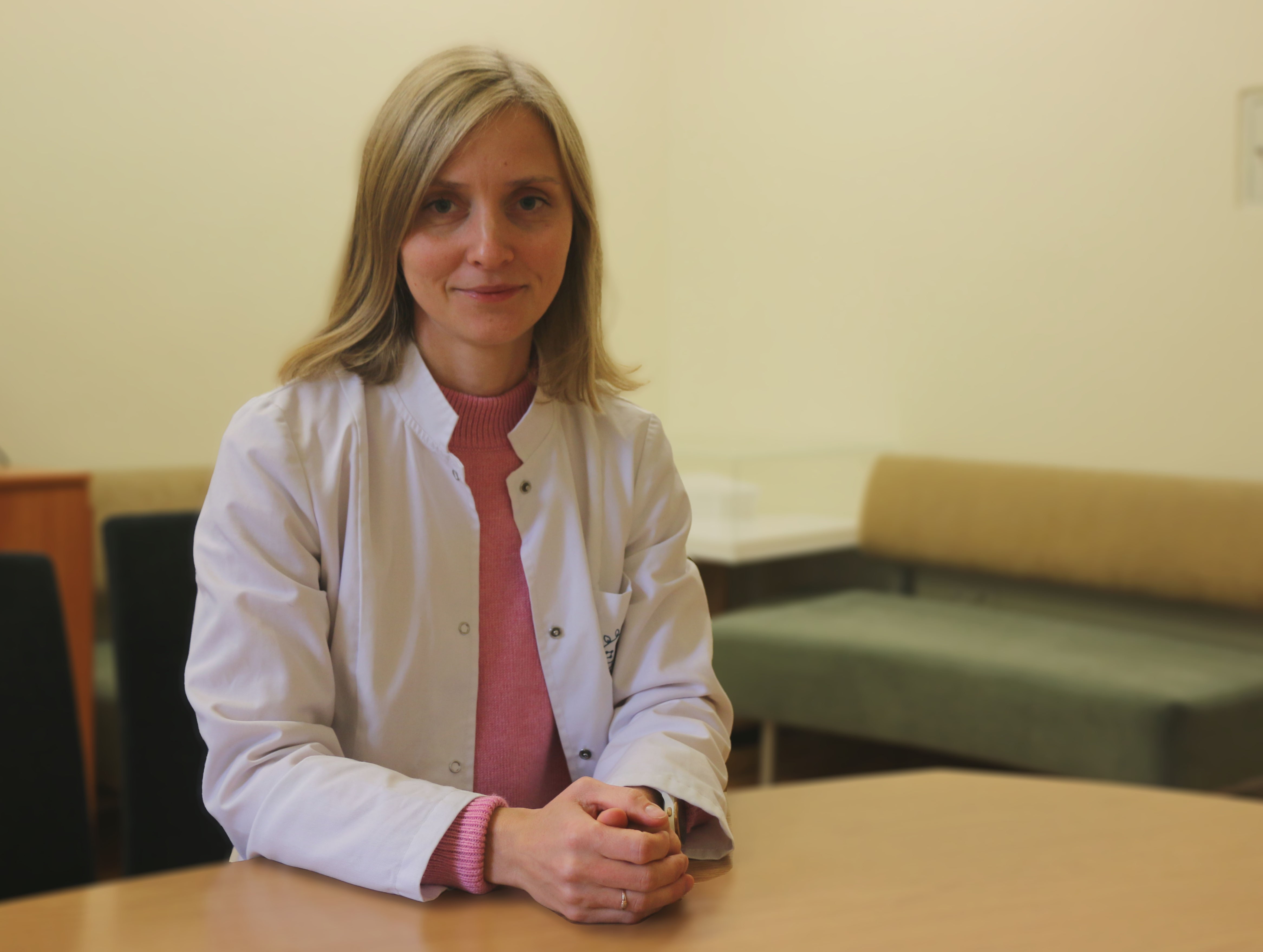
The topic of odontology abounds with questions not only from patients, but also researchers from multiple fields who are looking for new methods of treatment with practical application. After all, scientists have a long way to go from discovering a suitable material to designing a tangible product. Dr. Vita Zalite, a researcher from Latvia on a traineeship at Vilnius University (VU) Institute of Chemistry, explains that while artificial intelligence technologies may be able to scan our teeth and calculate the precise shape of dental fillings or implants in the future, so far chemists have been looking for materials that are less harmful to humans and more environmentally friendly.
Aiming to design materials resembling real teeth as closely as possible
Although the materials currently used in restorative dentistry are not harmful to humans, the fixation of dental fillings, bridges, and implants requires additional materials, which, as it were, glue them to the teeth. ‘Currently, my project aims to create a high-density, mechanically strong bioactive material consisting of calcium phosphates and several by-products. In the future, this material could be used in restorative dentistry,’ says Dr. Zalite.
In Vilnius, the chemist from Riga Technical University is learning to apply the method of phosphate synthesis, the so-called sol-gel synthesis technology. ‘This technology is similar to what I apply in Riga, only that it uses different reagents and the process itself is somewhat different. Moreover, I can take advantage of transmission electron microscopy (TEM) for conducting my experiments, which is not available at our institute,’ she says.
According to Dr. Zalite, the material she has been developing will be dense enough to potentially replace the currently-used zirconia implants and attach with the natural tissues of the tooth without additional materials. ‘In the future, robots and artificial intelligence may well be able to scan dental cavities and use the data to design a filling that corresponds with the natural tissue of the tooth. Today, however, this is little more than science fiction. My project currently involves synthesizing calcium phosphates, mixing them with biopolymers, and then performing a sintering process, which results in a high-density, strong material,’ says Dr. Zalite.
Sustainability reaching into the fillings themselves
The materials used in dentistry today are not harmful, Dr. Zalite explains. However, being able to recreate the natural structure of teeth would be beneficial all around. ‘The main factor making this type of material highly innovative is that its chemical composition would very closely resemble that of real teeth, including in density. We have already been able to produce different colors, too – after all, the color of each person’s teeth is slightly different,’ she says.
According to Dr. Zalite, although recreating the natural structure of the teeth would indeed be a significant achievement for the science of chemistry, the main advantage of the new material lies in its composition: ‘We need no toxic or harmful reagents to perform the synthesis of this material. We only use calcium and phosphorus sources and water. The only by-product of this synthesis is nothing but water, too. It is amazing that we need no additional substances to perform this synthesis – you only pour in the powder of required substances.’
This is why she is pleased to be able to contribute to a cleaner future: ‘There are plenty of toxins in our environment, air, and the items we use. So it would be great if we were able to insert less harmful materials into our mouths. However, we still have a long way ahead of us.’
Successful results requiring cooperation from scientists from many disciplines
At this point in the project, Dr. Zalite focuses exactly on designing a material that resembles the natural tissues of the tooth. However, its real-world application will take time: ‘To make the material suitable to humans, one starts with in vitro studies with cells. If the results are positive, the next stage is animal testing. Only then does one proceed to clinical studies involving people,’ explains Dr. Zalite.
However, a number of important issues need to be addressed before proceeding to the clinical stage. ‘We need to decide how we will be inserting these materials into people’s mouths and what binding materials we need. To this day, dental crowns are fixed on the teeth using special cement or other chemical materials. I would like my material to bind to human teeth naturally, meaning that we will need to learn a lot before we get there,’ says Dr. Zalite.
According to her, this field of research will need contributions form scientists from various disciplines. Dental bone regeneration is an important area of interest for researchers not only in Lithuania and Latvia, but also in Switzerland, Germany, the Netherlands, and many other countries. ‘This field is becoming increasingly interdisciplinary and ever more complex. As a material scientist, I can design and characterize materials, but dentists will have a completely different perspective on the issue. We also need them to point out the problems, so that we know how to proceed,’ says Dr. Zalite.
